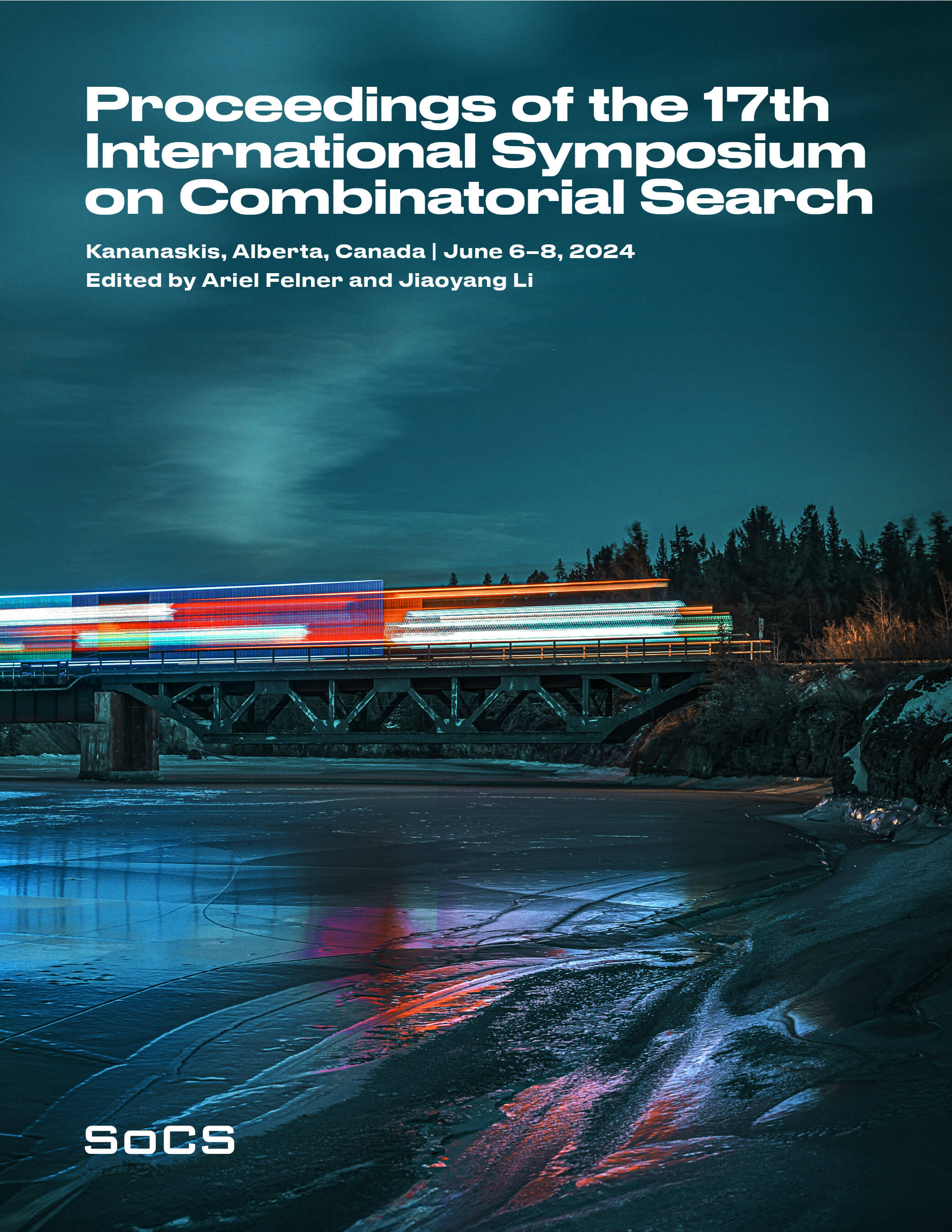Exploring Conflict Generating Decisions: Initial Results (Extended Abstract)
DOI:
https://doi.org/10.1609/socs.v17i1.31574Abstract
Boolean Satisfiability (SAT) is an NP-complete problem, indicating its inherent computational hardness. However, Conflict Driven Clause Learning (CDCL) SAT solvers efficiently tackle large instances in diverse domains. Swift conflict identification is crucial for effective problem-solving, as conflicts lead to the learning of search space pruning clauses, pinpointing the root causes of conflicts and preventing their recurrence. CDCL decision heuristics prioritize variables that participated in recent conflicts, anticipating rapid conflict generation and expediting additional clause learning. In practice, only a fraction of decisions lead to conflicts, yet some decisions may yield multiple conflicts. In this paper, we delve into a detailed study of conflict generating decisions in CDCL, distinguishing between single conflict (sc) decisions, generating only one conflict, and multi-conflict (mc) decisions, producing two or more conflicts. Our empirical analysis characterizes each decision type based on the quality of the learned clauses they produce. Furthermore, our theoretical analysis reveals a crucial distinction: consecutive clauses learned within the same mc decision form a chain of clauses, absent in learned clauses from sc decisions. This leads to the hypothesis that the reasons for conflicts in mc decisions are more closely related than the reasons for conflicts in sc decisions, empirically confirmed with our introduced notion of reason proximity. Finally, we propose score reduction (sr) as a novel decision strategy, reducing the selection priority of certain variables from learned clauses in mc decisions. With four sets of benchmarks, culminating in over 1200 benchmarks, empirical evaluation of sr implemented on top of the SAT competition 2023 winner solver reveals the merit of this new strategy.Downloads
Published
2024-06-01
Issue
Section
Extended Abstracts

